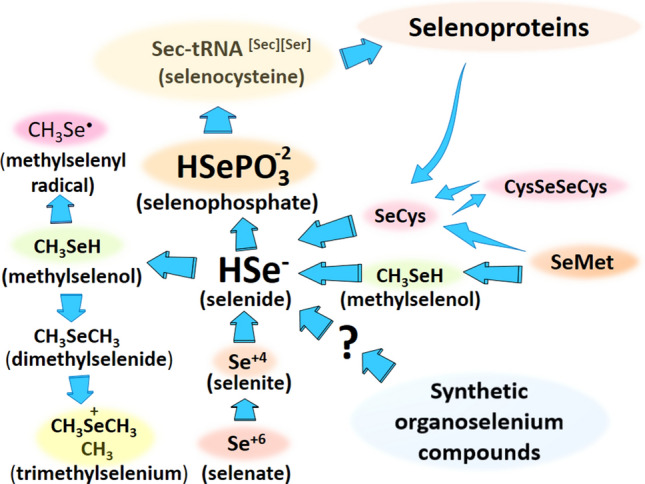Fig. 4.

Main metabolites of common dietary inorganic selenium forms (selenite or Se4+ and selenate or Se6+) and from selenomethionine (SeMet) to selenide (HSe–). Selenide is the key intermediate in the incorporation of selenium into the organic moiety of serine forming the selenocysteinyl residue at the level of the specific t-RNA (Sec-t-RNA[Sec][Ser]]) that will be incorporated in the structure of selenoproteins. Selenomethionine (a naturally occurring organic form of selenium) can be metabolized directly to methylselenol or via the transulfuration pathway to a minor amount of selenocysteine (SeCys) (Burk and Hill 2015), which due to its reactivity is expected to be oxidized to selenocystine (CysSeSeCys). The methylselenol can be demethylated to selenide, and SeCys and CysSeSeCys can also be metabolized to selenide. The methylselenol intermediate can be further methylated to dimethylselenide (which can be excreted via inhalation) and trimethylselenium cation (which is excreted in the urine). The methylselenol can also be oxidized to dimethyldiselenide or can form the extreme reactive selenyl radical. The elusive metabolism of synthetic organoselenium compounds into the inorganic selenide pool is indicated by a quotation mark
